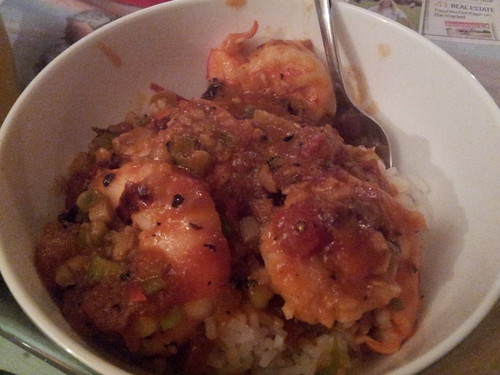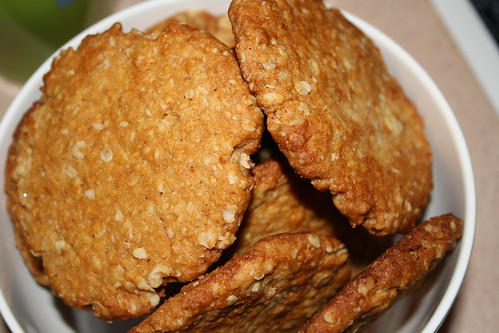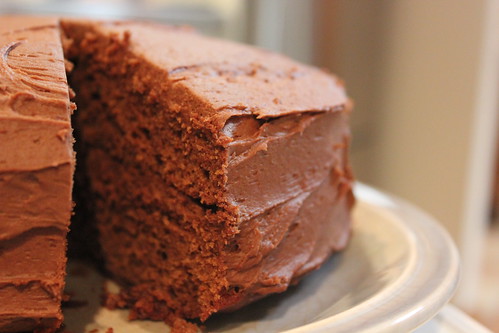 Yet again I was too hungry to care about photography!
Yet again I was too hungry to care about photography!
April has been a crazy month. Highs, lows, and flat out the whole way through. While we’ve actually done a fair bit of cooking, I’ve just not got around to writing any of it up. But, May is around the corner, and my calendar is starting to look slightly less scary, so hopefully this means it’s catch up time.
In addition to what seems like a billion recipes, there are also a few product reviews in the pipeline, so buckle your seat belts and bear with me while we try to catch up.
Let’s start with this easy prawn dish. As the mania of April subsides I find myself now enjoying a hefty head cold. I have lost my voice, but the majority of my complaints can be cured with cold and flu tablets. However, being a little poorly is always an excuse to eat as much spicy food as possible (well, it is in our house – in theory all the garlic, ginger and chilli will nuke whatever rogue bug it is).
Around Christmas time we are usually able to get hold of some snap frozen prawns, straight off the boat, at a good price. Last year, they arrived on Christmas Eve – provoking a little last minute menu stress. Andy and I are still working our way through our allocation of green prawns. We both love a good prawn curry and now the weather is cooling down, these seem to be making a very regular appearance on our meal plans.
I can’t recall the train of thought that led us to stumble upon this recipe for tom rim prawns. Quite a few tom rim recipes seem to be laced in sugar and almost all have the word “caramelised” in their English names. I’m not so hot on sugar in my savoury foods so when I found this variant, on Australian food blog The Toshes, with less emphasis on sugar and more on pepper and tomato, this was the one we rolled with.
Anyone who has any experience of what a genuine Tom Rim prawn dish looks and tastes like – please leave a comment!
This time round I got the glamour job (peeling the prawns) – complete with assistance from a curious cat. Andy actually did the cooking, and, just like me, made plenty of amendments. The finished product was served simply: on rice. There was enough sauce to go through the rice, the prawns were juicy and the whole thing was deliciously spicy.
As a bonus, it was also very quick to put together – if you forget about the 20 minutes or so peeling the prawns.
Absolutely recommended!
Ingredients
- vegetable oil
- 10 green prawns, peeled and de-veined (as much as humanly possible)
- 4 cloves garlic, peeled and crushed
- 4 tbsp fish sauce
- chilli flakes to taste
- approx 200 mL water
- 1 tsp tomato paste
- 1 fresh tomato
- 1 spring onion, sliced
- 3 tsp palm sugar
- freshly ground black pepper, to taste
- soy sauce (optional)
- lemon juice (optional)
- fresh coriander, for garnish
Instructions
- Heat oil in wok and fry off garlic and chilli. Don't allow the garlic to take on much colour.
- Add tomato paste, sugar and prawn. Toss to coat the prawns.
- Then add fish sauce, black pepper, water and diced tomato.
- Increase the heat and cook the prawns. When the prawns are cooked, remove them from the sauce. Check the sauce for seasoning and chilli/pepper heat and adjust before reducing to the desired consistency. We opted for a splash of soy sauce and lemon juice at this point.
- To serve, place rice in bowls, top with prawns and sauce and finish with a garnish of fresh coriander.


